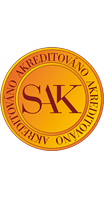, category News
First deep brain stimulation in Czechia was performed 20 years ago
Today, I has been 20 years since a new treatment using deep brain stimulation was successfully introduced in the Na Homolce Hospital. This was done in cooperation with the Department of Neurology of the 1st Medical School, Charles University, and General Teaching Hospital in Prague. This department presently continues to administer the Center for Intervention Therapy of Mobility Disorders (iTEMPO). On March 26, 1998, a stimulation electrode was implanted into the brain of a patient who suffered from essential tremor. The lifetime of a stimulation electrode (stimulator) is approximately 5 years. Since then, almost 300 patients have had stimulators placed or exchanged. Approximately 1000 stimulator implantations and subsequent re-implantations have been performed.
Two years later, the procedure was performed for the first time in a patient with Parkinson´s disease. Parkinson´s disease is a disorder of the central nervous system where there is a lack of neurotransmitters. Typical symptoms involve resting tremor, slowness of movement, general rigidity, and difficulty with walking. In 2005, dystonia was first treated in the Na Homolce Hospital with this type of stimulator. Patients suffer from involuntary muscle spasms or cramps that lead to writhing or cogwheel movements and abnormal posture. Essential tremor which is a disease, frequently hereditary, that presents with the upper extremity and head tremor which is most pronounced during movement has also been treated using this method. Thus, since then, all three diagnoses – Parkinson´s disease, various types of dystonia and essential tremor have been treated by deep brain stimulation at the Na Homolce Hospital.
Deep brain stimulation (DBS) leads to a long-term significant improvement of the quality of life of patients with neurological diseases in whom all other conservative treatment options have been exhausted. It uses high-frequency stimulation of identified brain structures by means of permanent electrodes which are placed within the brain.
“The stimulation set is comprised of an electrode introduced in the brain that is connected, under the skin, with the stimulator placed in a pouch under the collar bone. The electrode is introduced through a small opening in the skull and sends electric impulses with the frequency of 130 Hz and higher from its tip. The surgery is performed in two phases: In their first phase, electrodes are introduced into the brain under local anesthesia using a stereotactic frame, nervous cell activity is monitored and a test of clinical effectiveness and possible adverse events is performed. The original electrode placement that has been selected based on the anatomy obtained during an MRI scan is adjusted accordingly. In the second phase, a pulse generator is introduced subcutaneously under the collar bone under general anesthesia,“ says Dušan Urgošík, neurologist of the Na Homolce Hospital.
According to Urgošík, it can be expected that, as new technologies are developed, the range of neurological and psychiatric patients in whom the treatment can be used safely and effectively will increase. It is hoped that other diagnoses will be amenable to this treatment, for example patients with Tourette´s syndrome.
DBS treatment is multidisciplinary involving a number of medical specialties. Cooperation between neurosurgeons and neurologists, including in the operating room, is necessary. The Na Homolce Hospital is one part of the joint center in conjunction with the Neurology Clinic of the 1st Medical School, Charles University and the General Teaching Hospital in Prague. More detailed information on DBS will be presented on April 4, 2018 at a press conference held at the Ministry of Health.


